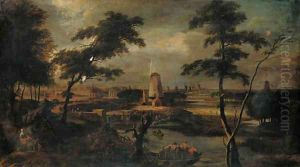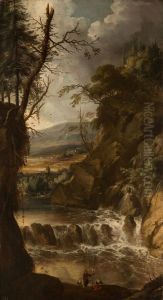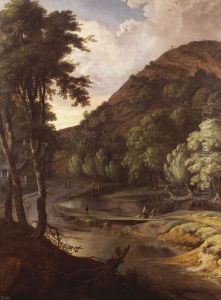Gerard Edema Paintings
Gerard Edema, sometimes also spelled Gerrit Adriaenszoon Edema, was a Dutch landscape painter who lived and worked during the 17th century, a period known as the Dutch Golden Age. Unfortunately, the exact year of his birth remains unknown, but it is generally believed that he was active as a painter from around 1660 until his death in 1700. Edema's works are characterized by their meticulous attention to the natural details of the landscapes he portrayed, which was typical of the Dutch landscape tradition of the time.
Born in Amsterdam, Edema is thought to have been a student of the prominent landscape painter Jacob van Ruisdael, whose influence is evident in Edema's work through the dramatic use of light and shadow, as well as the rendering of skies and water. While he spent most of his life in the Netherlands, it is also believed that Edema traveled to England for a period. His landscapes often featured water, including rivers and waterfalls, and were noted for the sense of vastness and the portrayal of atmospheric effects.
Despite his evident skill and the quality of his paintings, Gerard Edema did not achieve the same level of fame as some of his contemporaries. However, his works have been appreciated for their own merits and are part of the collection in various museums, including examples in the United Kingdom. The scarcity of biographical information and the limited number of his surviving works have made him a somewhat obscure figure in Dutch painting.
Edema's death is recorded in 1700, but like his birth, the exact circumstances of his passing are not well documented. Over time, his paintings have been studied for their contribution to the Dutch landscape genre, and they continue to be of interest to art historians and collectors. Edema's legacy, though not as pronounced as that of some of his peers, remains as part of the rich tapestry of Dutch Golden Age painting, and his works offer insight into the environmental and aesthetic values of his time.


